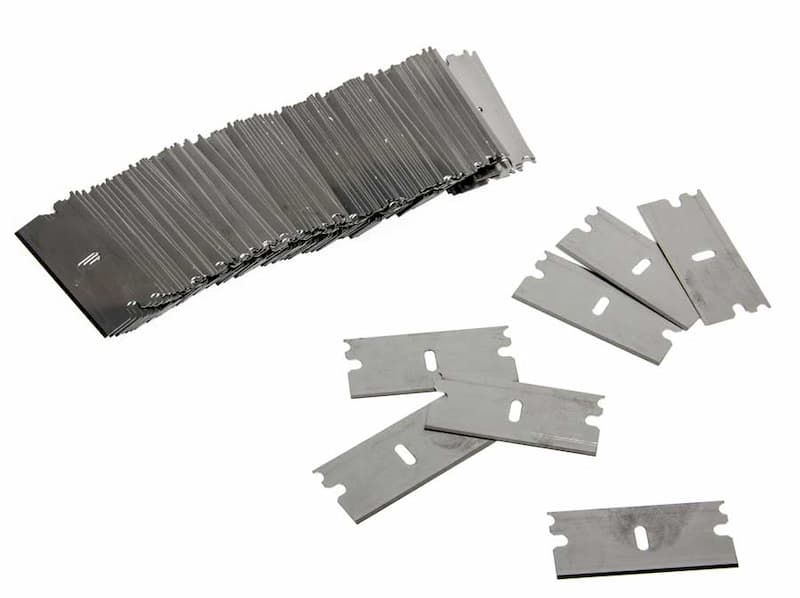In the fast-paced film production industry, achieving consistent, high-quality rolls is paramount. Even minor imperfections can disrupt downstream processes, lead to material waste, and ultimately impact your bottom line. One of the most crucial factors in achieving flawless roll quality is the selection and maintenance of your slitting blades.
This comprehensive guide dives deep into film slitting, exploring the key considerations for optimal blade selection and maintenance practices. By understanding these factors, you can ensure your slitting operation runs smoothly and efficiently and delivers flawless rolls every time.
Understanding the Film Slitting Process
Film slitting involves transforming wide webs of film into narrower rolls with precise edge quality. This process is central to various applications, including food packaging, medical films, industrial tapes, and flexible laminates.
The core components of a slitting line include:
- Unwind Stand: Holds the master roll of film.
- Slitting Unit: Comprises circular razor blades that perform the actual cutting.
- Rewind Stands: Take up the slit film rolls.
- Guiding System: Ensures accurate web alignment during slitting.
- Tension Control System: Maintains consistent tension throughout the web.
The Critical Role of Slitting Blades
Slitting blades are the workhorses of the film slitting process. Their performance directly impacts the quality of the finished rolls. Here’s why blade selection and maintenance are so crucial:
- Edge Quality: A sharp, well-maintained blade produces clean, straight cuts without edge roll or distortion.
- Dimensional Accuracy: Precise blade geometry ensures consistent slit widths across the entire width of the web.
- Material Compatibility: Choosing the right blade material for the specific film type minimizes blade wear and tear, leading to longer blade life and consistent cutting performance.
- Minimizing Downtime: Regular blade inspection and replacement schedules prevent unexpected failures and production disruptions.
Selecting the Right Slitting Blade
The optimal blade selection depends on several factors, including:
- Film Type: Different film materials have varying properties like hardness, elasticity, and thermal sensitivity. Blades should be designed and coated to handle the specific film being processed.
- Film Thickness: Thicker films necessitate more robust blades with thicker bodies and potentially different geometries.
- Slit Width: Narrower slits might require specialized industry razor blades with finer cutting edges for optimal precision.
- Slitting Speed: High-speed slitting operations demand blades engineered for high performance and resistance to wear at faster cutting speeds.
- Number of Slits: The number of simultaneous cuts influences the blade selection. More cuts might necessitate thinner or multi-ground blades to minimize web distortion.
Maintaining Peak Blade Performance
Even the best blades require proper maintenance to ensure optimal performance and longevity. Here are some key practices:
- Regular Inspection: Inspect blades for signs of wear, nicks, or damage before each use. Worn blades can cause edge defects and should be replaced promptly.
- Cleaning: Maintain blade cleanliness by removing any film residue after use. Use appropriate cleaning methods depending on the blade material.
- Proper Storage: Store blades in a dry, dust-free environment when not in use. This prevents corrosion and ensures blades remain sharp for optimal cutting performance.
- Sharpening (if applicable): Some blade types can be resharpened by a qualified professional. However, there’s a limit to the number of sharpening cycles a blade can undergo before needing replacement.
Investing in a Blade Management System
Implementing a structured blade management system can significantly improve your film-slitting operation. This system could involve:
- Tracking Blade Usage: Maintain records of blade usage for each roll or production run. This helps identify trends in blade wear and optimize replacement schedules.
- Standardized Inspection Procedures: Developing clear protocols for blade inspection ensures consistency across operators and minimizes the risk of overlooking potential issues.
- Inventory Management: Maintain an adequate stock of replacement blades to avoid production delays caused by unexpected blade depletion.
Additional Considerations for Flawless Roll Quality
Optimizing blade selection and maintenance is just one piece of the puzzle for achieving flawless roll quality. Here are some additional factors to consider:
- Web Guiding System: An accurate guiding system ensures the film web is fed into the slitting unit precisely, minimizing edge wander and variations in slit width.
- Tension Control: Maintaining consistent web tension throughout the slitting process prevents edge tears, wrinkles, or telescoping (undesirable length variations) in the finished rolls.
- Slitter Setup and Alignment: Proper setup and alignment of the slitting unit, including blade positioning and pressure settings, are crucial for achieving clean cuts and consistent slit widths.
Benefits of Flawless Roll Quality
Achieving consistent, high-quality rolls in film slitting offers numerous benefits, including:
- Reduced Waste: Flawless rolls minimize material waste during slitting and downstream converting processes.
- Improved Efficiency: Clean cuts and consistent slit widths reduce the need for rework or rejection of rolls, leading to smoother production flow.
- Enhanced Downstream Processing: Flawless rolls ensure proper handling and performance in subsequent converting and packaging operations.
- Increased Customer Satisfaction: Delivering high-quality films to your customers reinforces brand reputation and customer loyalty.
Conclusion
By prioritizing blade selection, implementing proper maintenance practices, and focusing on overall slitting line optimization, you can ensure your film slitting operation produces flawless rolls consistently. This translates to reduced waste, improved efficiency, and, ultimately, increased profitability.
Partner with Hardedge Tool for Your Film Slitting Needs
Hardedge Tool is your trusted partner for all your film-slitting blade requirements. We offer a comprehensive range of high-performance industry razor blades designed for optimal performance with various film types and applications.
We also provide valuable resources and guidance on proper blade maintenance practices to ensure you achieve flawless roll quality and maximize your slitting operation’s efficiency.
Contact Hardedge Tool today to discuss your film slitting blade requirements. Explore our range of specially designed, high-performing blades and discover how they can help you achieve optimal performance and consistent roll quality.

